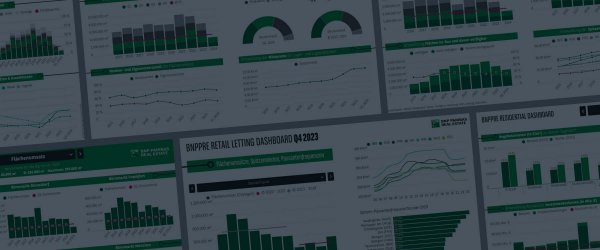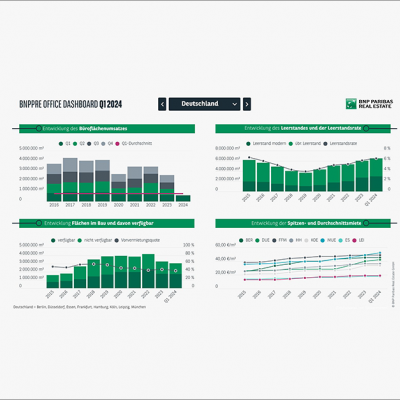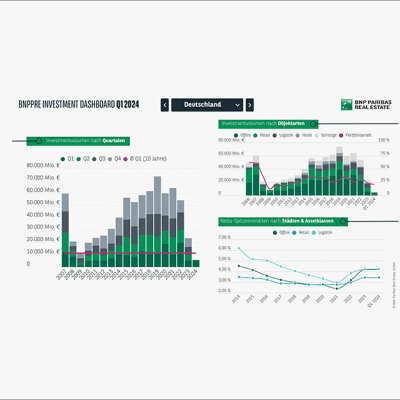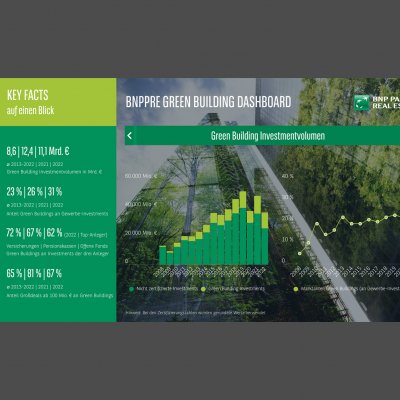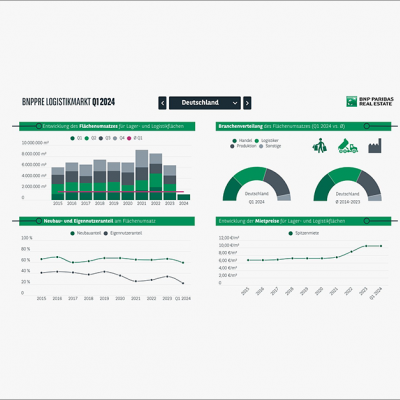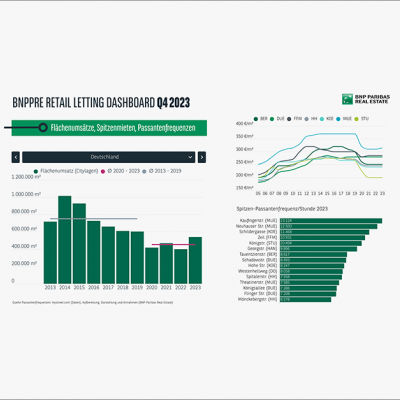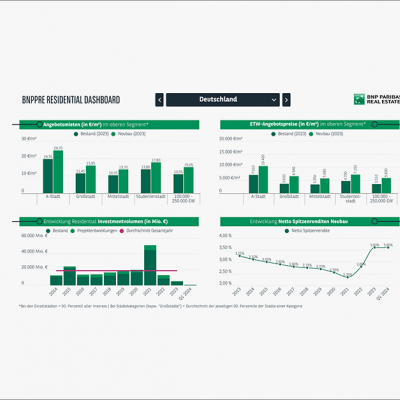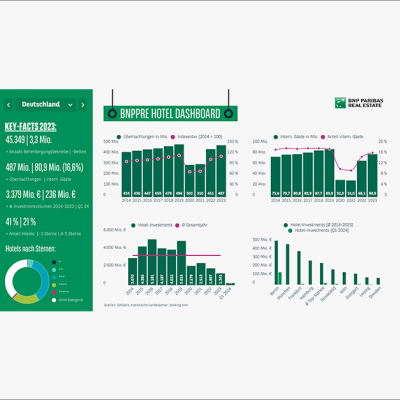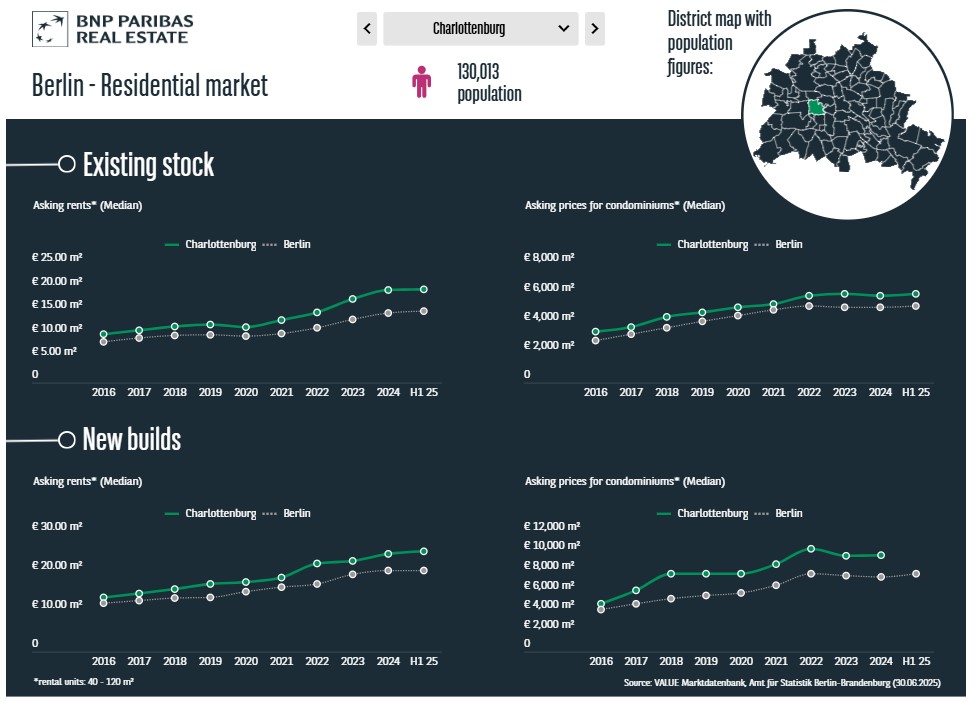BNPPRE Dashboards
The BNP Paribas Real Estate Dashboards offer us a wide range of opportunities to present real estate markets digitally and interactively. Be it at your desk or when out and about, their responsive layout enables you to view, analyse and discuss the latest market developments in different asset classes on your smartphone, tablet, PC or laptop. What’s more, the integrated filter function allows you to clearly view and compare large amounts of data at a glance. Why open a multitude of individual files or carry around pages upon pages of documents when you can quickly access an up-to-date market or location overview with just a tap or a click?
Office market key figures
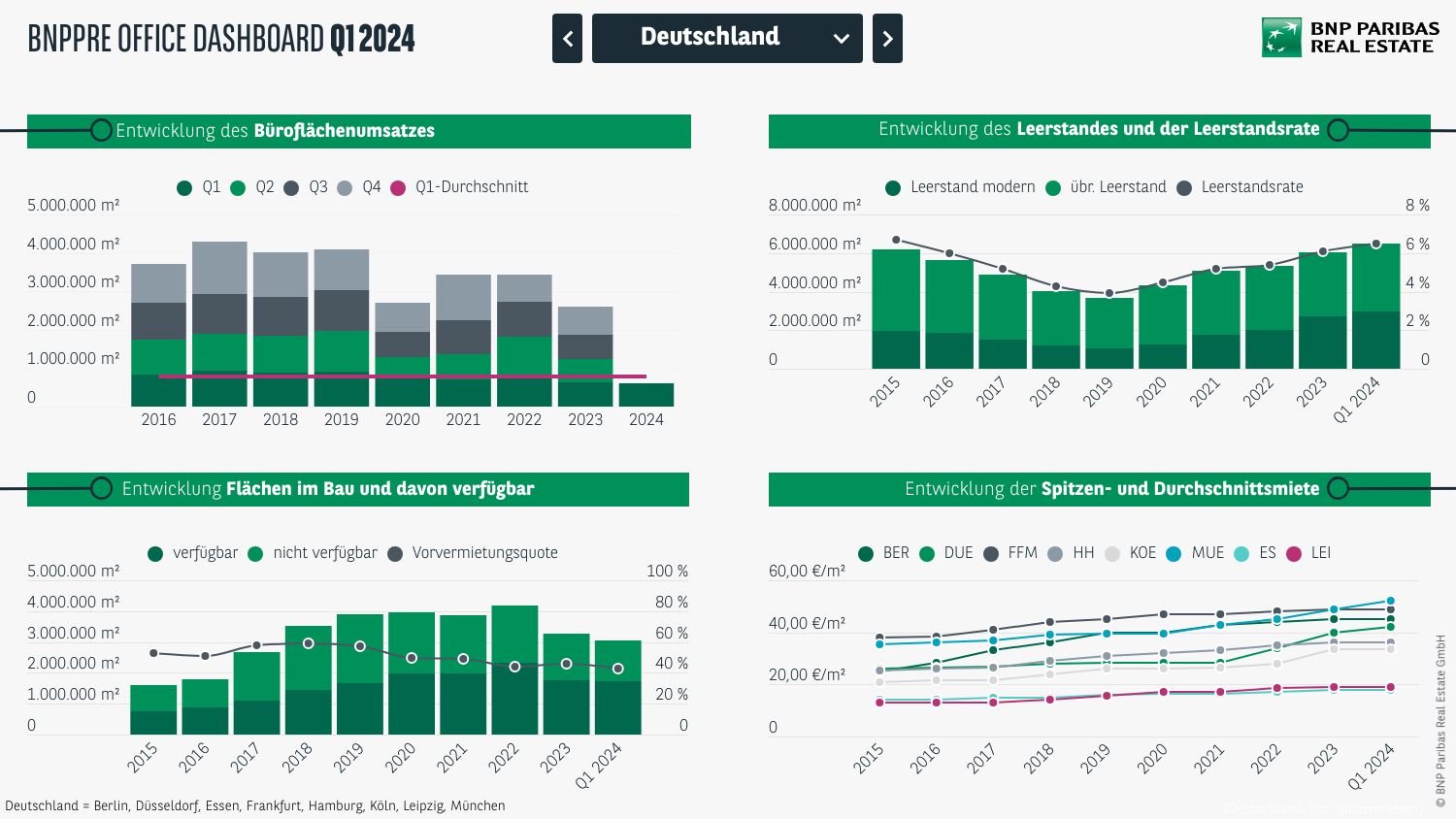
Office market Q4 2025
In an environment that remains challenging, Germany’s office markets have matched the previous year’s result. Office take-up in Germany’s key markets - Berlin, Düsseldorf, Essen, Frankfurt, Hamburg, Cologne, Leipzig and Munich - amounted to 2.7 million square metres for the total year 2025, representing a slight increase of 1.4% compared with 2024. Market development was shaped above all by large, signal-setting deals at the beginning of the year and a marked rise in letting activity within the medium-sized segment, although not all markets were able to participate in these positive results. Companies are approaching decisions on offices more actively - often after a long analysis phase, but subsequently with swift implementation. The driving factor remains the “flight to quality”. For 2026, we anticipate a further moderate revival in leasing activity, especially if the filled decision pipelines result in more contracts in the second half of the year - particularly in the large-scale segment. Nonetheless, external factors, such as trade and geopolitical conflicts, may continue to cause short-term volatility.
Investment market key figures
Commercial investment market Q4 2025
The German commercial investment market remained stable overall in 2025, despite a continuing challenging environment. The total annual investment volume is recorded at just under €34 billion. This is slightly below the previous year's result by -3.5%, although performance varied significantly across asset classes, including a remarkable 19.5% increase in office transactions and an almost 29% rise in hotel investments. Towards the end of the year, the market gained further momentum: with €10.2 billion, the final quarter showed the most lively months of the year. The strong last chapter of the year demonstrates that, in many cases, the investment pipeline became ready for transaction and processes were more consistently brought to a deal. Key factors were more realistic price expectations and better predictability of financing. Overall, 2026 is likely to be characterised by a broader deal base, even though market participants are expected to continue acting with discipline in their calculations and risk assessments.
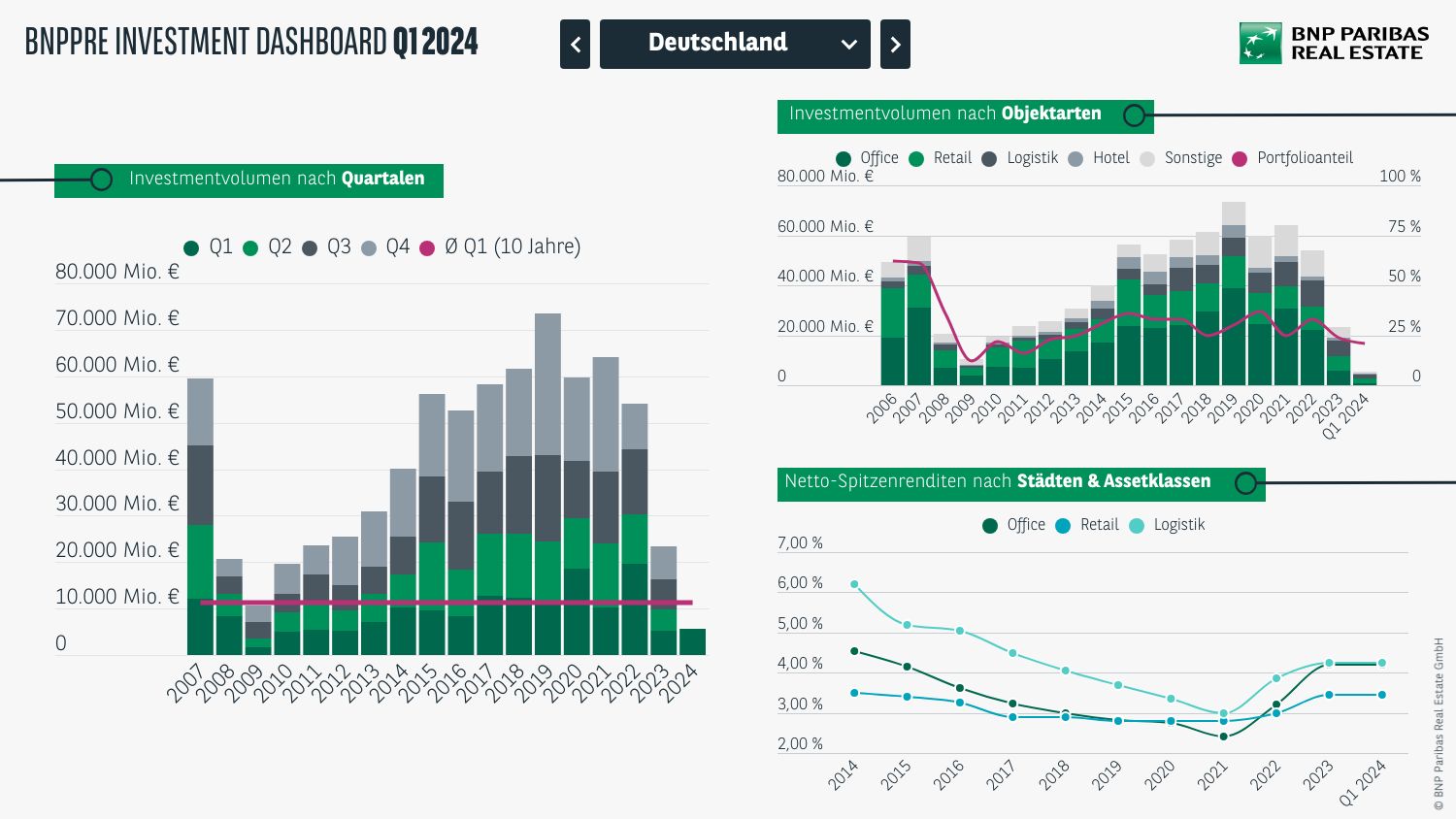
Green Building Dashboard
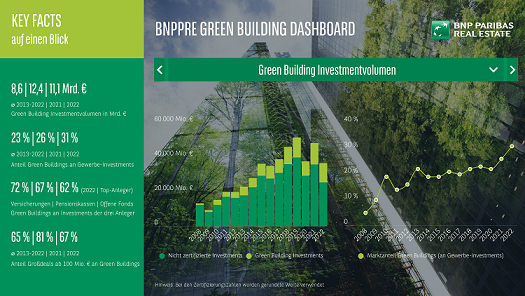
The share of certified green buildings within the commercial investment volume (excluding portfolios) remains at a very high level, even in a challenging market environment. After the top figure of just under 31% in 2022, around 27% was achieved in 2023. This is the second-highest share in the last 10 years and confirms the importance of green investments. While the EU Taxonomy mainly concerned companies in the real estate sector that wanted to place funds on the capital market, it is now affecting more and more market participants. Accordingly, sustainability regulations are becoming increasingly important for investors and buyers across the board, while at the same time occupiers (tenants and leaseholders) must now also take taxonomy criteria into account in their corporate governance. Against this backdrop, proactive management will remain the order of the day in 2024.
Logistics market key figures
Logistics market Q3 2025
By the end of the third quarter, the nationwide logistics market achieved a take-up of 4.3 million square metres, which is around 10% higher than the previous year's result. Following a subdued start to the year, the market gained momentum, with take-up rising to 1.5 million square metres in Q2 and 1.6 million square metres in Q3. Despite the ongoing weak economic environment, this result is very positive, even if it is still 14% below the ten-year average. Since the second quarter, there has been greater activity and a more positive outlook among companies in the market than in the previous weak year. This is reflected in a higher number of large-scale contracts and an increasing number of space requests, for example. Notably, demand for space is also picking up again in the e-commerce sector. Rental prices rose slightly in some markets in Q3. Compared with the previous year, prime rents increased by an average of 2.4% across all locations, while average rents rose by 3.9%.
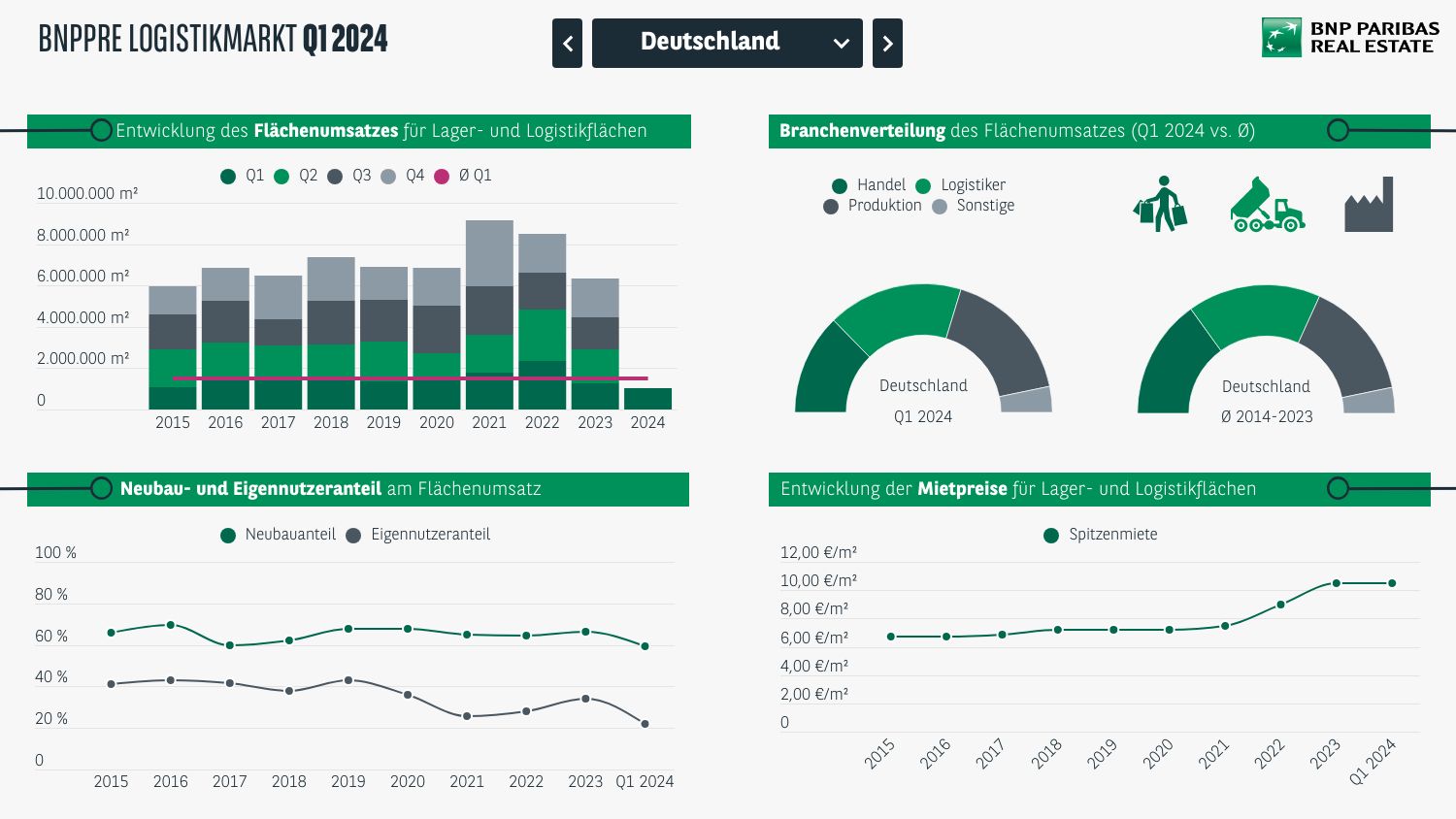
Retail market key figures
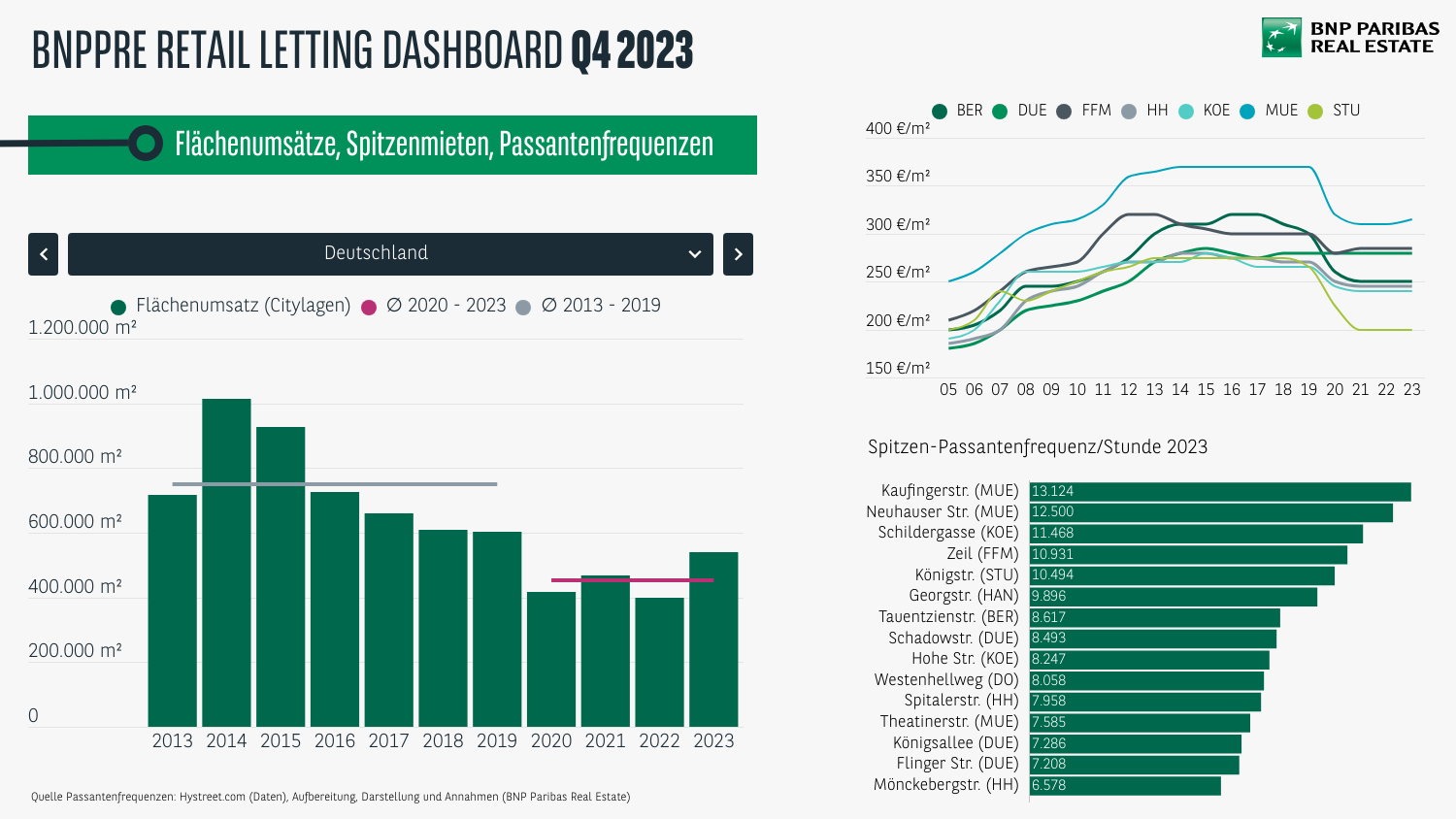
Retail market Q3 2025
On the inner-city retail market, the positive letting momentum of the first half of the year continued in the third quarter. The ongoing consolidation processes remain a driving factor behind the lively market activity. Many prominent players are renting very large flagship stores in prime locations, but are significantly reducing their overall number of shops. These include the major international retailers Inditex and TK Maxx, as well as German players such as C&A and Thalia, with the market leader in brick-and-mortar book retailing currently repositioning itself in the top spots in the largest cities. At the same time, there are an increasing number of retailers who are once again seeking to enter the German market (e.g. Arc'terix and Nordic Nest) or are pushing ahead with their strategic expansion plans. In this context, Uniqlo and the Bestseller Group, among others, are very active with their concepts that are still new to brick-and-mortar retail, such as Only & Sons and JJXX, but also with their established brands such as Only. However, the good result was made possible above all by the numerous re-lettings in former Galeria assets.
Residential market key figures
Residential Dashboard Q3 2025
After the first three quarters of 2025, the residential investment volume amounted to €6.3 billion. Thus, residential continues to hold first place as the most lucrative asset class in the German real estate market even after nine months. The significantly improved sentiment is supported by forward deals, which have gained in importance. In addition, the noticeably increased weight of large-scale nationwide portfolios, as well as the renewed interest in the value-add segment, contribute significantly to the sustainable recovery of the market. For the final quarter, a continuation of the upward trend is expected, as many investment products that just entered the market in the second quarter have resulted in a large backlog of transactions yet to be completed. Given the very well-filled deal pipeline and the prospect of further portfolio restructurings, an investment volume in the double-digit billion range by the end of the year appears realistic from the current perspective.
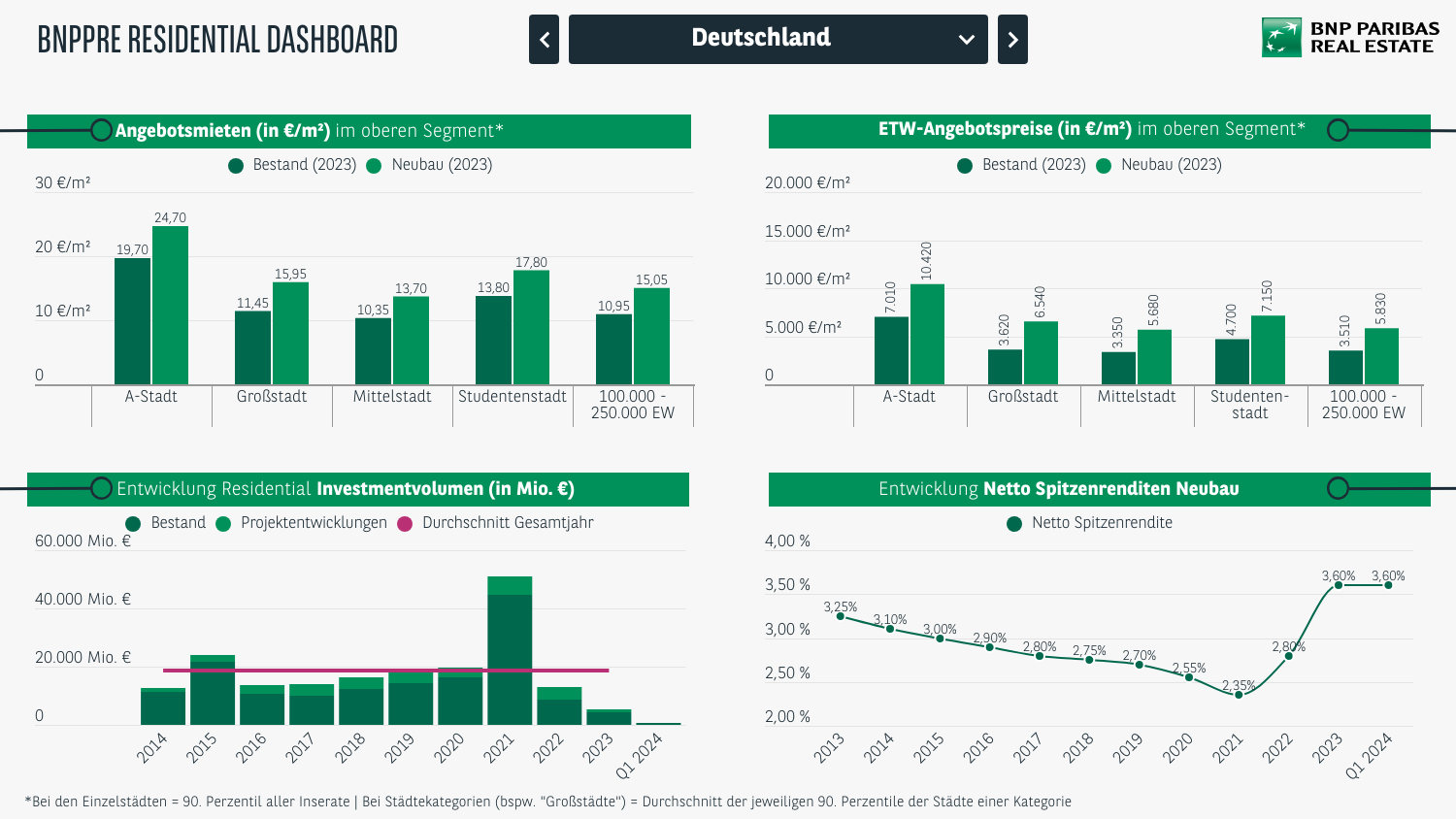
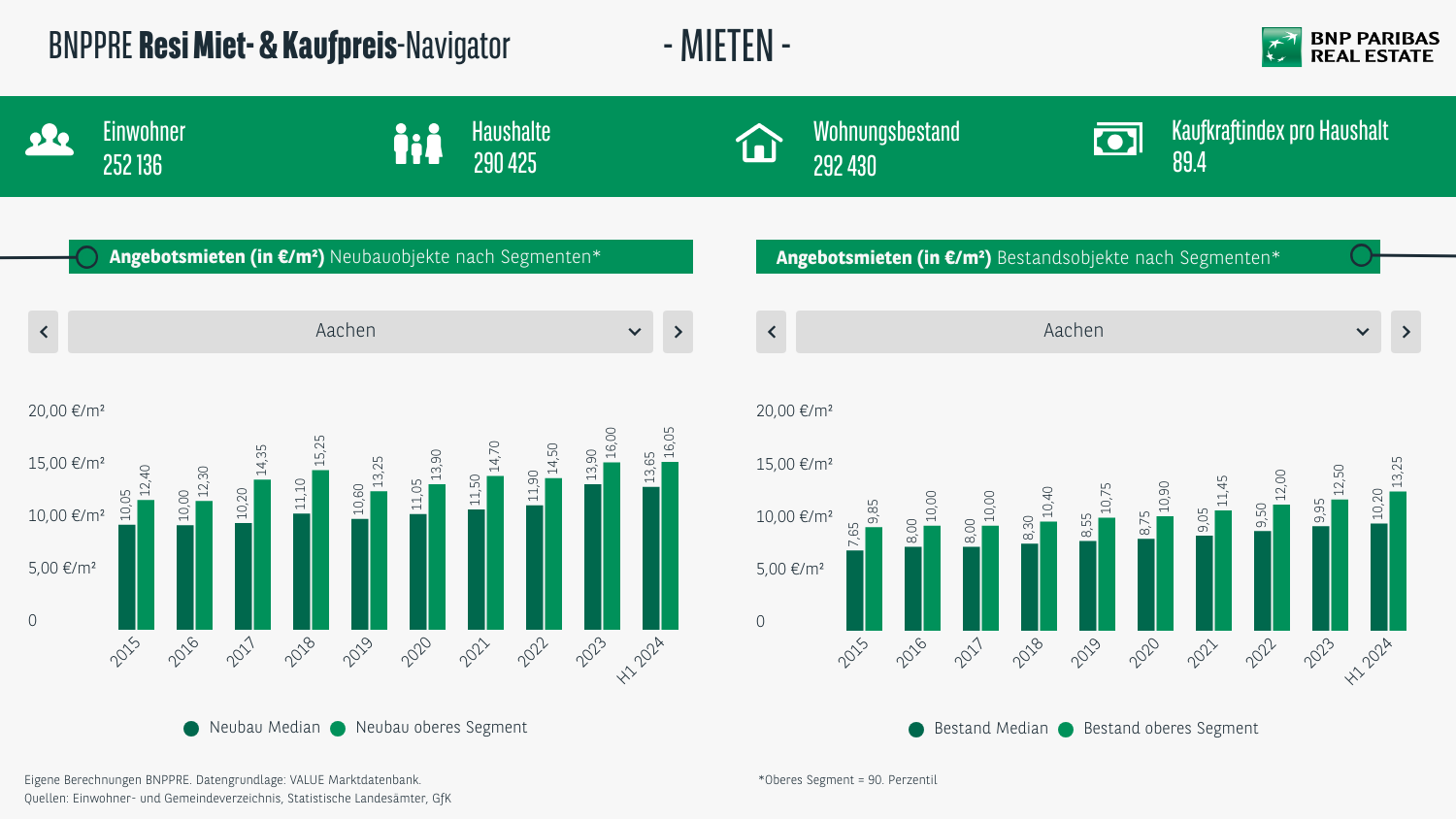
Residential rental & purchase price navigator
The residential markets of the most popular metropolises in Germany have been dominated by rising rental and purchase prices for years. But what is the situation in the rest of the country? BNPPRE investigated this question and analyzed all 108 independent cities in Germany. With the BNPPRE Residential Navigator, which is updated every six months, you can make further progress through the numerous residential markets and keep an eye on rental and purchase price developments (for condominiums) in the new builds and existing stock as well as other key figures.
Hotel Dashboard Q3 2025
The increased interest in hotel investments, evident for some time now, is also reflected in transaction volumes. With a total turnover of nearly €1.43 billion, hotels have boosted their volume by almost 44% compared to the same period last year, achieving their best result since 2021. By the end of September, the 12-month volume from the previous two years had already been surpassed. Particularly noteworthy is the positive market momentum over the course of the year, as evidenced by two very strong quarters with investment volumes of almost €600 million each, following a rather weak start to the year due to a shortage of available product from 2024. Also encouraging is the upward trend in the portfolio segment, which reached nearly €380 million - the highest volume since 2020. At the same time, the volume of individual transactions has, for the first time since 2022, exceeded the €1 billion mark. There is a high probability that this asset class is now at the beginning of a new cycle. This presents investors with excellent entry opportunities to benefit from the expected yield compression.
The Hotel Dashboard from BNP Paribas Real Estate provides an overview of the development of hotel investment and performance indicators in the various top markets in Germany.
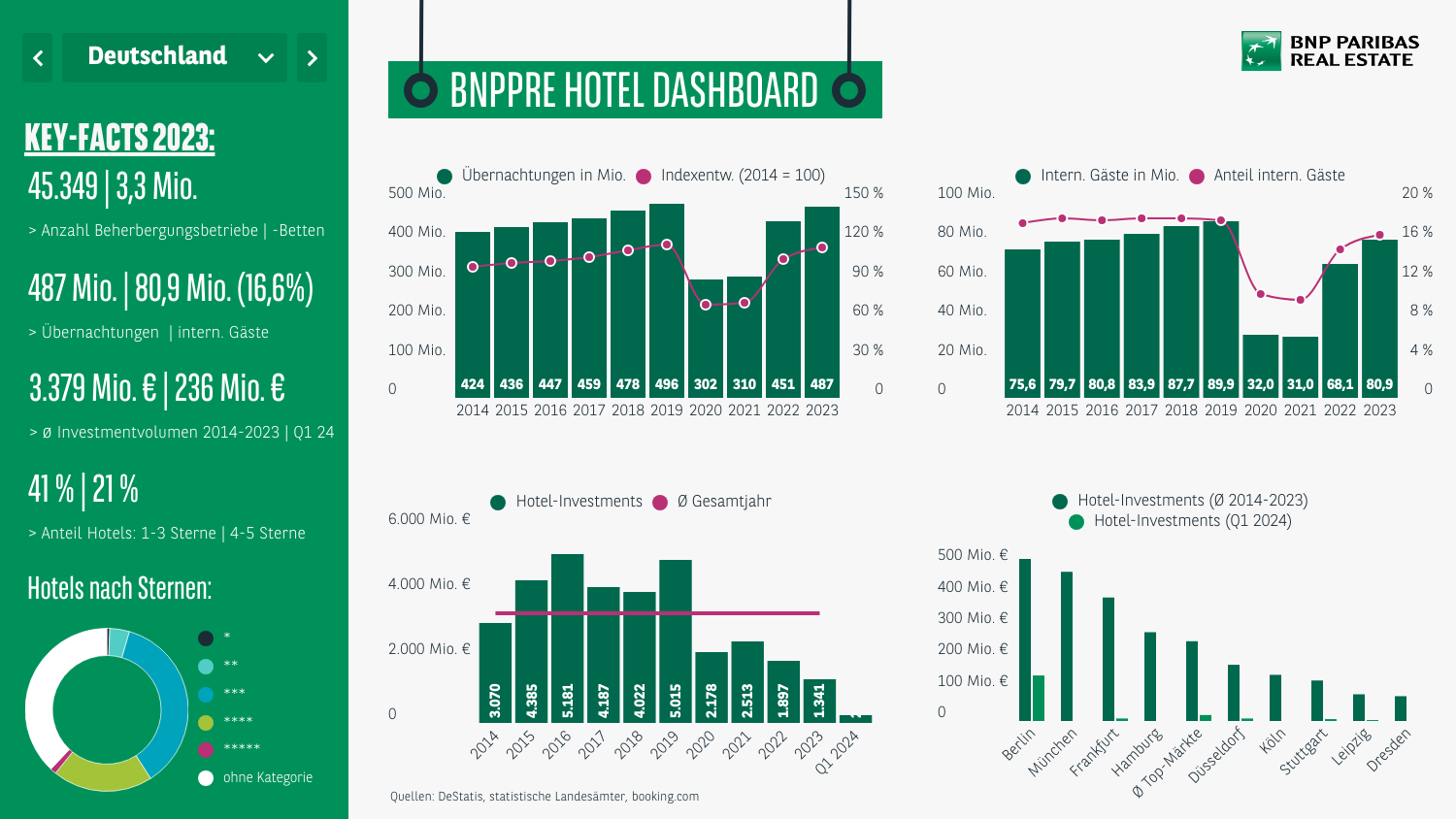
Hotel market key figures
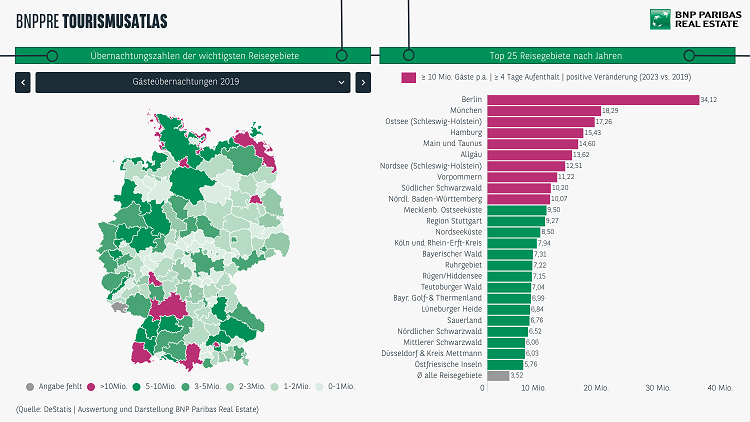
BNPPRE Tourism analyser
On the German hotel market, all key performance data indicates a sustainable recovery in tourism in Germany after the challenging COVID-19 years of 2020 and 2021. Significant increases in overnight stays by guests in accommodation establishments were already evident in 2022 (+49%) and 2023 (+61%). In 2024 around 496 million overnight stays were recorded, which not only exceeds the pre-COVID-19 figure from 2019, but also represents a new record in a long-term comparison. This reflects the resurgence in demand from city and business tourism as well as guests from abroad. Compared to the previous year, the number of overnight stays by foreign guests rose by a good 5% (85 million guests in 2024). Other key figures such as room occupancy and average prices also developed positively. By 2024, the occupancy rate had returned to a high level of just under 67% nationwide. The top 5 most popular travel destinations in 2024 are Berlin (31 million guests), Munich (20 million guests), the Baltic Sea (19 million guests), Hamburg (16 million guests) and the Main/Taunus region with 15 million guests. Furthermore, 52 million overnight stays were already registered between January and February 2025 - a strong signal for a continued positive trend in the current year.
While some dashboards are no longer up to date, they still offer an exciting insight into the various markets. Scroll through our dashboard archive here:
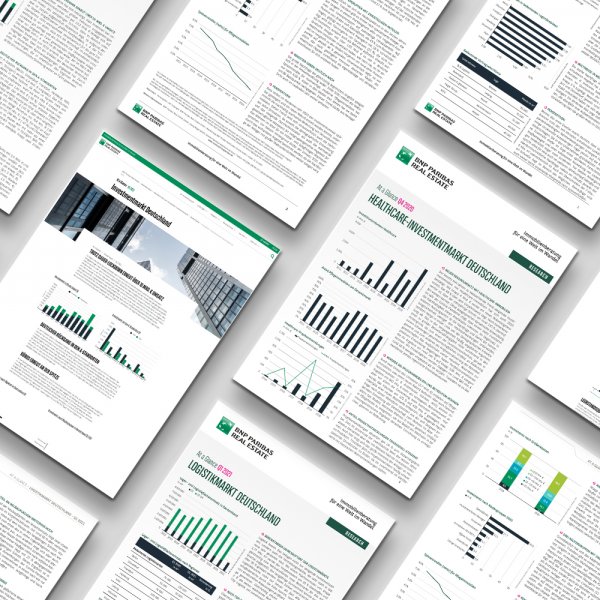
KEY FIGURES AND ANALYSES
ON THE GERMAN REAL ESTATE MARKET
Find out more about the latest developments in the investment, office, logistics, retail, hotel, healthcare and residential real estate markets to base your property decisions on a strong foundation of solid market information. We are happy to provide you with an extensive overview of property-related developments throughout Germany and details of the real estate markets of the largest German cities.
